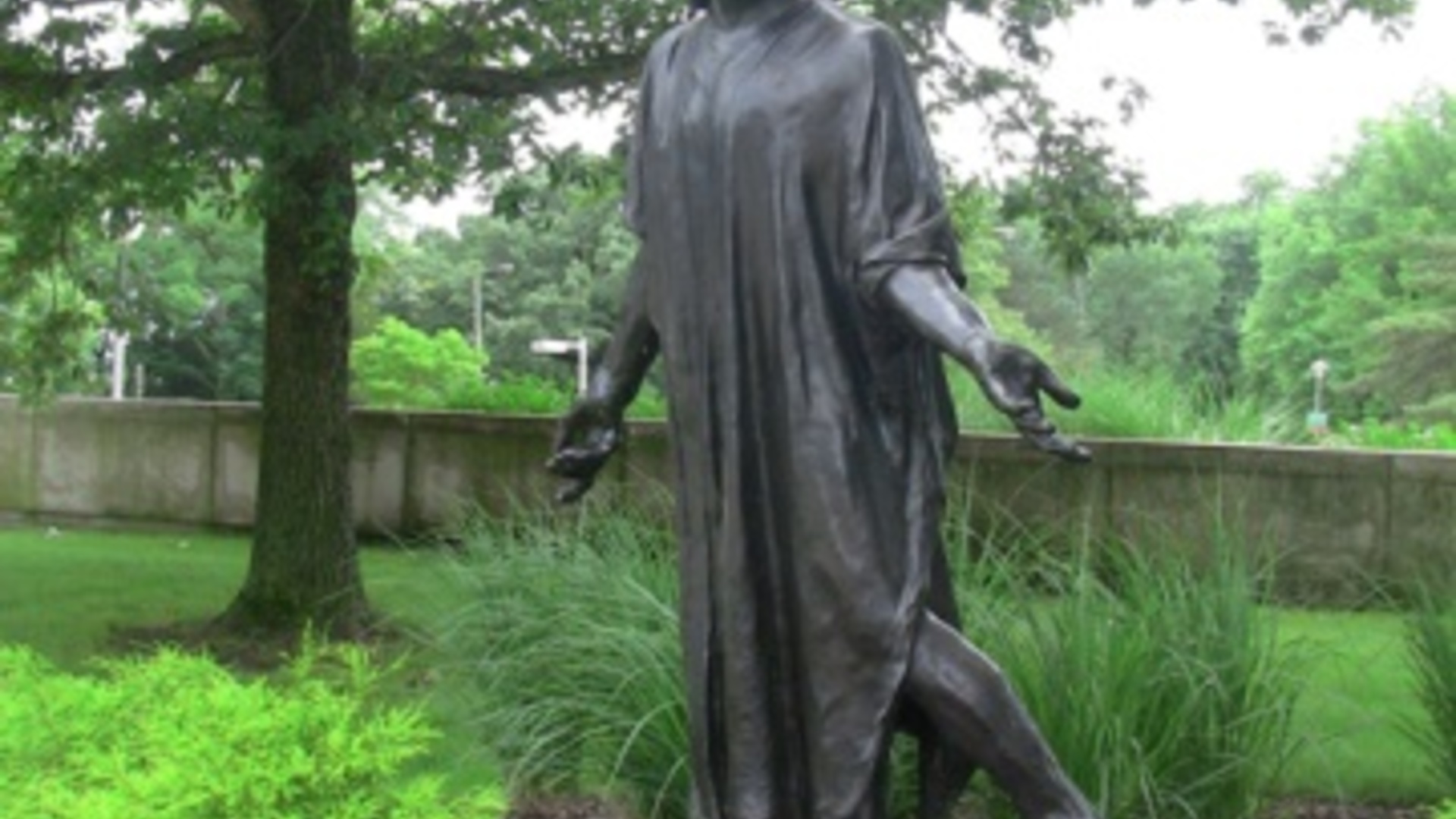Jean de Fiennes, draped
Auguste Rodin was the most influential and successful sculptor of the Post-Impressionist era. The sculpture in front of the Boyd Law Building, Jean de Fiennes, is cast from the youngest of the six figures that comprise The Burghers of Calais. Rodin won this commission from the City of Calais in 1884, to commemorate an event during the Hundred Years' War, when six men surrendered themselves to Edward III for execution so that he lift the British siege from the city. Instead of idealized heroes, Rodin presented the commissioners of Calais with ordinary men, dressed in sackcloth and expressing various emotions of despair and resignation. The figures have exaggerated facial expressions, elongated limbs, and heavy, layered clothing. Rodin was not only showing how these men may have looked, but also how they may have felt. Critics scorned this highly personal representation, yet it opened new doors to later sculptors who were inspired by Rodin's expressive use of the human figure. Another key element of Jean de Fiennes is the low pedestal that is almost at street level. This suggests to viewers and students that the ordinary young person is capable of noble acts.
Although often touted as the greatest sculptor of the nineteenth century, the youthful Rodin was rejected three times from the École des Beaux-Arts. Unable to find satisfactory apprenticeships, and later rejected from the Salon, the artist went through a period of self-imposed quasi-exile in Brussels. He returned to Paris after his work was finally accepted into the Salon, to critical acclaim. The commission for The Burghers of Calais confirmed his status as the most important sculptor of the period.

